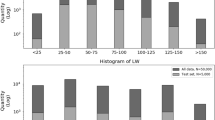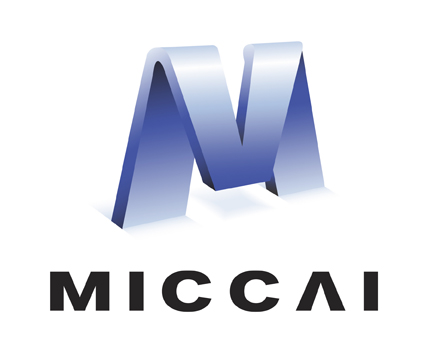Abstract
Magnetic Resonance Spectroscopy (MRS) and Spectroscopic Imaging (MRSI) are non-invasive techniques to map tissue contents of many metabolites in situ in humans. Quantification is traditionally done via model fitting (MF), and Cramer Rao Lower Bounds (CRLBs) are used as a measure of fitting uncertainties. Signal-to-noise is limited due to clinical time constraints and MF can be very time-consuming in MRSI with thousands of spectra. Deep Learning (DL) has introduced the possibility to speed up quantitation while reportedly preserving accuracy and precision. However, questions arise about how to access quantification uncertainties in the case of DL. In this work, an optimal-performance DL architecture that uses spectrograms as input and maps absolute concentrations of metabolites referenced to water content as output was taken to investigate this in detail. Distributions of predictions and Monte-Carlo dropout were used to investigate data and model-related uncertainties, exploiting ground truth knowledge in a synthetic setup mimicking realistic brain spectra with metabolic composition that uniformly varies from healthy to pathological cases. Bias and CRLBs from MF are then compared to DL-related uncertainties. It is confirmed that DL is a dataset-biased technique where accuracy and precision of predictions scale with metabolite SNR but hint towards bias and increased uncertainty at the edges of the explored parameter space (i.e., for very high and very low concentrations), even at infinite SNR (noiseless training and testing). Moreover, training with uniform datasets or if augmented with critical cases showed to be insufficient to prevent biases. This is dangerous in a clinical context that requires the algorithm to be unbiased also for concentrations far from the norm, which may well be the focus of the investigation since these correspond to pathology, the target of the diagnostic investigation.
Access this chapter
Tax calculation will be finalised at checkout
Purchases are for personal use only
Similar content being viewed by others
References
de Graaf, R.A.: In Vivo NMR Spectroscopy: principles and techniques, 3rd ed., WILEY (2018)
Ratiney, H., et al.: Time-domain semi-parametric estimation based on a metabolite basis. NMR Biomed. 18, 1–13 (2005)
Provencher, S.: Estimation of metabolite concentrations from localized in vivo. Magn. Reson. Med. 30(6), 672–679 (1993)
Wilson, M., et al.: A constrained least-squares approach to the automated quantitation of in vivo 1h magnetic resonance spectroscopy data. Magn. Reson. Med. 65(1), 1–12 (2011)
Chong, D.G.Q., et al.: Two-dimensional linear-combination model fitting of magnetic resonance spectra to define the macromolecule baseline using FiTAID, a Fitting Tool for Arrays of Interrelated Datasets. Magn. Reson. Mater. Physics, Biol. Med. 24, 147–164 (2011)
Bhogal, A.A., et al.: 1H-MRS processing parameters affect metabolite quantification: the urgent need for uniform and transparent standardization. NMR in Biomed. 30, e3804 (2017)
Marjanska, M., et al.: Results and interpretation of a fitting challenge for MR spectroscopy set up by the MRS study group of ISMRM. Magn. Reson. Med. 87(1), 11–32 (2022)
Wick, C.: Deep Learn. Informatik-Spektrum 40(1), 103–107 (2016). https://doi.org/10.1007/s00287-016-1013-2
Gyori, N.G., et al.: Training data distribution significantly impacts the estimation of tissue microstructure with machine learning. Magn. Reson. Med. 87(2), 932–947 (2022)
Lee, H.H., et al.: Deep learning-based target metabolite isolation and big data-driven measurement uncertainty estimation in proton magnetic resonance spectroscopy of the brain. Magn. Reson. Med. 84(4), 1689–1706 (2020)
Gurbani, S.S., et al.: Incorporation of a spectral model in a convolutional neural network for accelerated spectral fitting. Magn. Reson. Med. 81, 3346–3357 (2018)
Hatami, N., Sdika, M., Ratiney, H.: Magnetic resonance spectroscopy quantification using deep learning. In: Frangi, A.F., Schnabel, J.A., Davatzikos, C., Alberola-López, C., Fichtinger, G. (eds.) Medical Image Computing and Computer Assisted Intervention – MICCAI 2018. Lecture Notes in Computer Science, vol. 11070, pp. 467–475. Springer, Cham (2018). https://doi.org/10.1007/978-3-030-00928-1_53
Jungo, A., et al.: Assessing Reliability and Challenges of Uncertainty Estimations for Medical Image Segmentation, arXiv:1907.03338v2. (2019)
Bolliger, C.S., et al.: On the use of Cramér-Rao minimum variance bounds for the design of magnetic resonance spectroscopy experiments. Neuroimage 83, 1031–1040 (2013)
Landheer, K., et al.: Are Cramer-Rao lower bounds an accurate estimate for standard deviations in in vivo magnetic resonance spectroscopy? NMR Biomed. 34(7), e4521 (2021)
Gal, Y.: Uncertainty in Deep Learning, University of Cambridge (2016)
Kendall, A.: What uncertainties do we need in Bayesian deep learning for computer vision? arXiv:1703.04977v2. (2017)
Gal, Y. et al.: Dropout as a Bayesian approximation: representing model uncertainty in deep learning, arXiv:1506.02142v6. (2016)
Soher, B.J., et al.: VeSPA: integrated applications for RF pulse design, spectral simulation and MRS data analysis. Proc. Int. Soc. Magn. Reson. Med. 19(19), 1410 (2011)
Oz, G., et al.: Short-echo, single-shot, full-intensity proton magnetic resonance spectroscopy for neurochemical profiling at 4 T: validation in the cerebellum and brainstem. Magn. Reson. Med. 65(4), 901–910 (2011)
Marjańska, M., et al.: Region-specific aging of the human brain as evidenced by neurochemical profiles measured noninvasively in the posterior cingulate cortex and the occipital lobe using 1H magnetic resonance spectroscopy at 7 T. Neuroscience 354, 168–177 (2017)
Hoefemann, M., et al.: Parameterization of metabolite and macromolecule contributions in interrelated MR spectra of human brain using multidimensional modeling. NMR Biomed. 33(9), e4328 (2020)
Oz, G., et al.: Clinical proton MR spectroscopy in central nervous system disorders. Radiology 270(3), 658–679 (2014)
Kyathanahally, S.P., et al.: Deep Learning approaches for detection and removal of ghosting artifacts in MR Spectroscopy. Magn. Reson. Med. 80, 851–863 (2018)
Snoek, J.: Practical Bayesian otimization of Machine Learning Algoirthms. In: 25th International Conference on Neural Information Processing System, vol. 2, pp. 2951–2959 (2012)
Espi, M., et al.: Exploiting spectro-temporal locality in deep learning based acoustic event detection. J. Audio Speech Music Proc. 26 (2015)
Kingma, D.P., et al.: Adam: A method for stochastic optimization. Arxiv:1412.6980. (2014)
Niculescu-Mizil, A., et al.: Predicting good probabilities with supervised learning. In: 22nd ICML, pp.7–11 (2005)
Kuleshov, V., et al.: Accurate uncertainties for deep learning using calibrated regression. In: 35th ICML (2018)
Cui, S., et al.: Towards discriminability and diversity: batch Nuclear-norm Maximization under label insufficient situations. Arxiv:2003.12237v1. (2020)
Acknowledgments
This work is supported by the Marie-Sklodowska-Curie Grant ITN-39 237 (Inspire-Med) and the Swiss National Science Foundation (#320030–175984).
Author information
Authors and Affiliations
Corresponding author
Editor information
Editors and Affiliations
Rights and permissions
Copyright information
© 2022 The Author(s), under exclusive license to Springer Nature Switzerland AG
About this paper
Cite this paper
Rizzo, R., Dziadosz, M., Kyathanahally, S.P., Reyes, M., Kreis, R. (2022). Reliability of Quantification Estimates in MR Spectroscopy: CNNs vs Traditional Model Fitting. In: Wang, L., Dou, Q., Fletcher, P.T., Speidel, S., Li, S. (eds) Medical Image Computing and Computer Assisted Intervention – MICCAI 2022. MICCAI 2022. Lecture Notes in Computer Science, vol 13438. Springer, Cham. https://doi.org/10.1007/978-3-031-16452-1_68
Download citation
DOI: https://doi.org/10.1007/978-3-031-16452-1_68
Published:
Publisher Name: Springer, Cham
Print ISBN: 978-3-031-16451-4
Online ISBN: 978-3-031-16452-1
eBook Packages: Computer ScienceComputer Science (R0)





